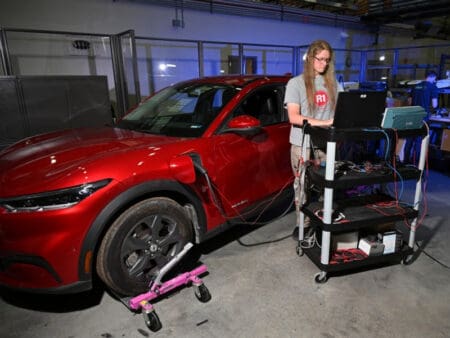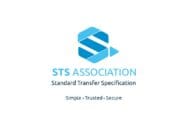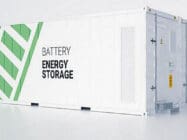
Cybersecurity labelling coming in the US for smart devices and meters, detecting EV charging vulnerabilities and how vortex rings may speed nuclear fusion are on the week’s technology radar.
Cybersecurity labelling introduced in US
A cybersecurity certification and labelling programme, the Cyber Trust Mark, has been launched in the US as a voluntary initiative for manufacturers to indicate the cyber worthiness of their devices.
The programme, which was proposed by the Federal Communications Commission, will be applicable to common devices such as smart refrigerators, smart microwaves, smart televisions, smart climate control systems, smart fitness trackers, etc.
Several major manufacturers and retailers have already made commitments to the programme, including Amazon, Best Buy, Google, LG Electronics, Logitech and Samsung.
Have you read?
Gaps in EV codes tied to cybersecurity and grid interface issues
Energy Transitions Podcast: The value of circular asset management
Under the proposed programme, which is expected to be up and running in 2024, consumers can expect to see a distinct shield logo applied to products meeting established cybersecurity criteria.
With this, they can then make informed decisions on the relative security of products they choose to purchase and retailers will be encouraged to prioritise labelled products on their shelves and online.
A national registry of certified devices with specific and comparable security information also is planned.
While cybersecurity certification schemes are not uncommon, the consumer labelling proposal appears to be a first and will likely be replicated for other smart devices and in other regions.
In parallel with the launch of the US Cyber Trust Mark programme the US Department of Energy announced an initiative to work with national labs and industry partners to research and develop cybersecurity labelling requirements for smart meters and power inverters as essential components of the smart grid.
Detecting EV charging vulnerabilities
Idaho National Laboratory intern Jake Guidry has developed a cybersecurity research tool that could improve the security of electric vehicle charging.
The AcCCS tool, a combination of hardware and software that emulates the electronic communications that occur between an EV and an extreme fast charger during the charging process, provides access capabilities through the CCS (combined charging system) communications protocol.
The AcCCS hardware includes a charging port and a charging cable, both of which can be plugged into real-world equipment.
No charging power flows through the device. If one plugs the AcCCS into an EV, the vehicle’s computer thinks the battery is receiving a charge. If the tool is plugged into a 350kW fast charging station, the station thinks it is charging an electric vehicle.
“It’s basically acting like one to trick the other,” says Guidry, a master’s degree student in mechanical engineering from the University of Louisiana at Lafayette, who explains that with it not only can normal operations be skewed but also cyber attacks can be introduced.
In a demonstration, researchers used AcCCS to hack a charging station and a vehicle.
Future experiments should help them to develop best practice recommendations for the industry.
Vortex rings may speed nuclear fusion
Vortex rings – those rings of smoke that are the aspiration of novice cigarette smokers – may hold a key to advancing fusion energy as well as research on supernovae as the most explosive objects in the universe.
Nuclear fusion is the process of pushing atoms together until they merge. But part of the problem is that the fuel can’t be neatly compressed and instabilities cause the formation of jets that penetrate into the hotspot, with the fuel spurting out between them – similar to that of the juice of an orange that is squashed in a hand.
Modelling of the phenomenon by researchers at the University of Michigan has shown that the vortex rings that form at the leading edge of these jets are mathematically similar to smoke rings as well as the plasma rings that fly off the surface of a supernova.
Michael Wadas, a doctoral candidate at the University of Michigan, explains that in a supernova the vortex rings move outward from the collapsing start whereas in fusion it moves inward, disrupting the stability of the burning fuel and reducing the efficiency of the reaction.
With their findings, the researchers hope to be able to understand the limits of the energy that a vortex ring can carry, and how much fluid can be pushed before the flow becomes turbulent and harder to model as a result.
In ongoing work, the team is validating the vortex ring model with experiments.








